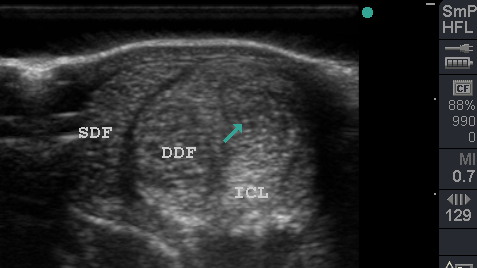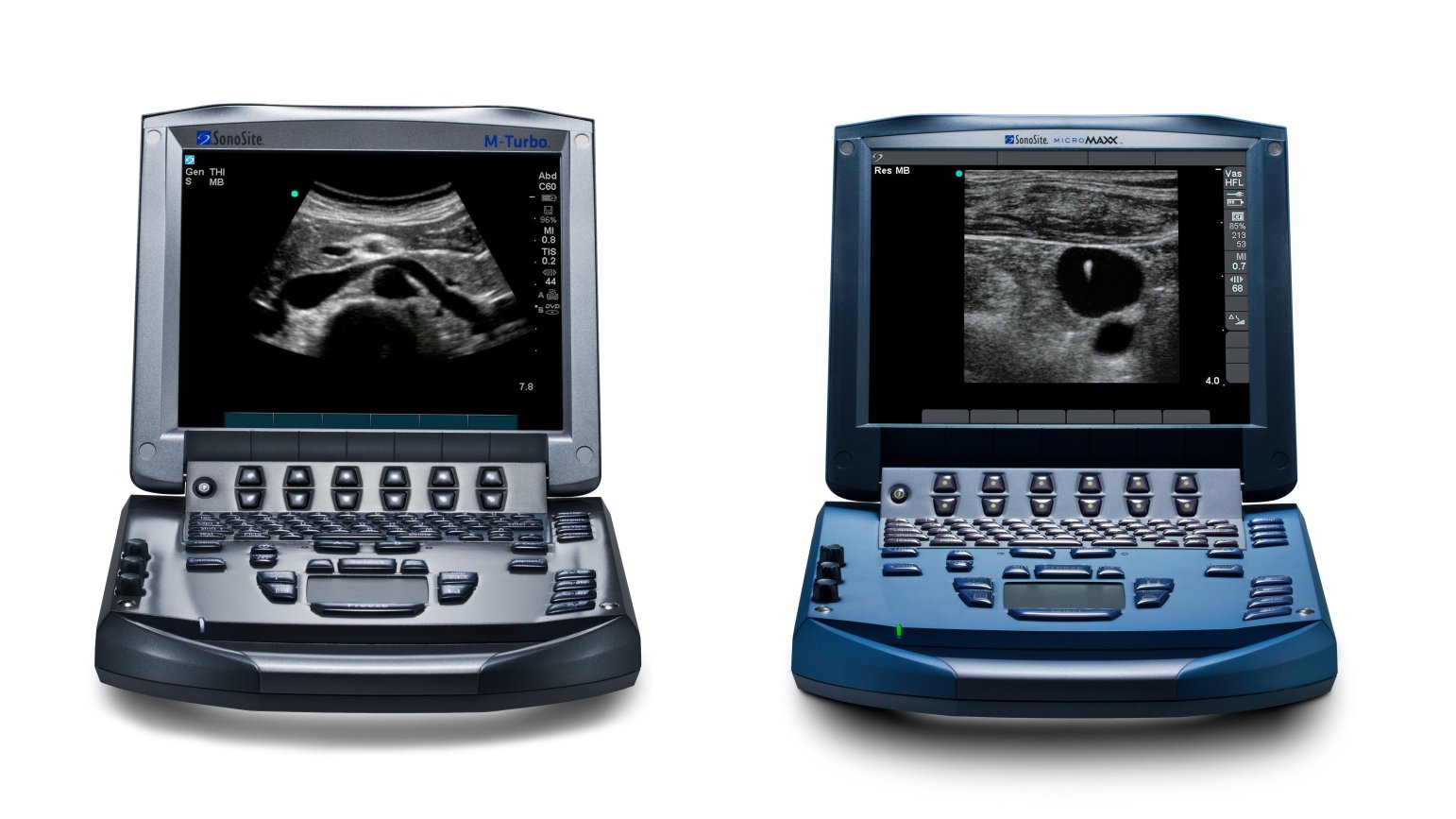We have invested heavily in high quality ultrasound equipment in order to enable us to obtain the best images without needing to take the horse to a hospital. In particular, our Sonosite M-Turbo gives very high quality images for orthopaedic work and we usually use a Draminski-Blue for abdominal scanning.
How does it work?
Ultrasound uses high-frequency sound waves that pass through the body before reflecting and bouncing back to the handpiece. This echo is transformed into a picture by the computer. Different tissues reflect the ultrasound in different ways and this allows us to visualise structures in great detail. Additionaly, colour doppler ultrasound uses the way ultrasound reflects differently in moving blood to show how it is flowing.
What can we see?
- Ultrasound is used for evaluating orthopaedic injuries, in order to visualise enlargement of tendons and ligaments as well as the disruption of normal fibre pattern. In some parts of the body, such as the stifle, images can be obtained of joint cartilage.
- Signs of disease in the liver and other abdominal organs.
- Distension and thickening of intestinal wall in cases of colic or intestinal disease.
- Structures inside the eye which could not otherwise be seen.
- Abnormalities of blood flow within the heart.



